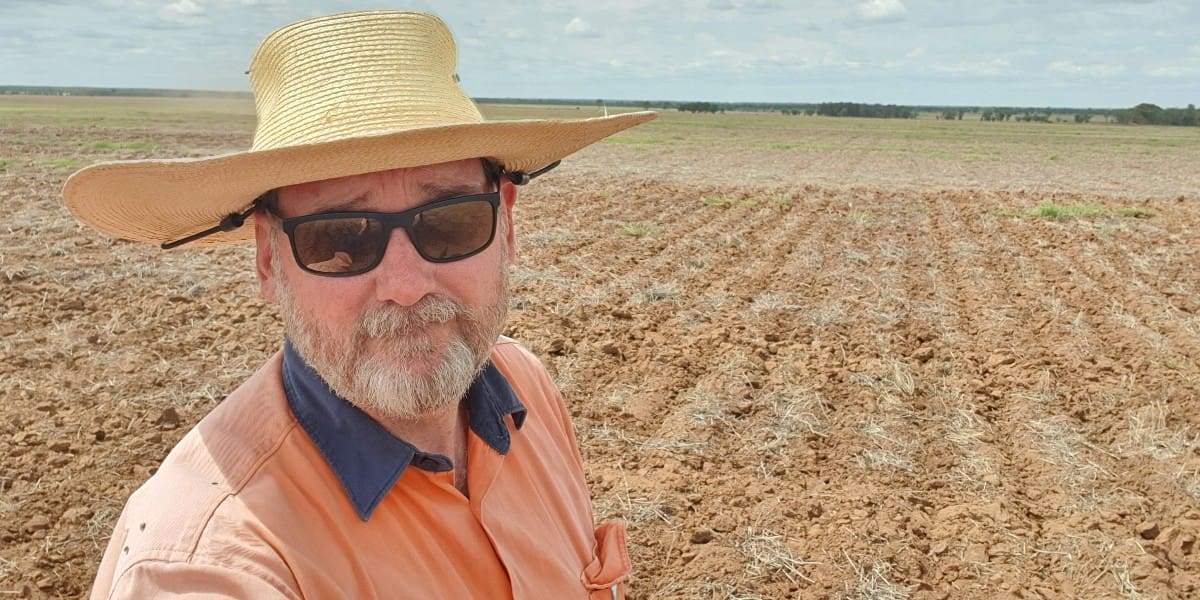
QDAF researcher Dr David Lester is heading up research into deep-banding phosphorous.
QUEENSLAND’S Department of Agriculture and Fisheries has commenced research projects investigating the most economically beneficial deep phosphorus-banding methods aimed at increasing yields for the state’s grain growers.
The work is part of long-term, multi-million-dollar investment by GRDC on behalf of Australian grain growers to understand phosphorous fertiliser use efficiency, its behaviour in different soil types, its residual benefits, and importantly the economic returns on-farm.
It will build on long-term research which has found that deep banding — applying phosphorus between 10 and 30 cm below the soil surface in concentrated bands — boosted yield for some central and southern Queensland grain growers by more than 10 per cent compared to surface application alone.
DAF principal research scientist crop improvement RD&E David Lester said the research could provide real outcomes for Queensland grain growers.
“This important research can help Queensland grain farmers increase their crop yields, and the soil and water productivity,” Dr Lester said.
“Phosphorus is a finite resource, so making sure it is placed in the soil optimally for plant recovery is important.”
Nine new research sites from Condamine in the east, Roma in the north, and Mungindi in the south have been established, and large plots will allow growers to measure yield responses at harvest, mirroring commercial scale farming operations.
Smaller plots will be used to experiment with different fertiliser intensities and spacing between banding, and how various environments might interact with these regimes.
A separate complementary project with plots at Capella, Jimbour West, Goondiwindi, Condamine, and west of Roma, will analyse the long-term residual benefits of deep phosphorus-banding.
This work will build on more than 11 years of research by DAF, GRDC and the University of Queensland, and apply those learnings at a broadacre scale.
Deep-banded phosphorus plots were established at these sites between 2013 and 2016.
Researchers will reassess these sites to determine the residual benefits of banding 6-10 years after application.
This data can then be fed back into cost-benefit analyses based on the amount of fertiliser applied, and the timeframe until reapplication is required.
This research aims to maximise the efficiency of phosphorus fertiliser use and thus return on investment for grain growers by locating it at the most ideal depth in the soil for crop uptake, which also significantly reduces the risk of runoff.
GRDC grower relations manager Rebecca Raymond said GRDC has invested more than $6 million into research that improves researchers and growers understanding of phosphorous fertiliser-use efficiency.
“We are also investing in additional research to investigate where phosphorous fertiliser goes and what agronomic practices effect its uptake,” Ms Raymond said.
“In response to feedback received through GRDC’s National Grower Network, we have now partnered with DAF to invest a further $590,000 towards understanding the economic viability of phosphorus in farming systems in southwest Qld, as well as the long-term residual benefits of deep placed phosphorus in southwest and Central Queensland.
“It is important these key research learnings are validated and tested at a farm level in different environments, so we can understand the cost benefits for growers.”
Source: QDAF

HAVE YOUR SAY